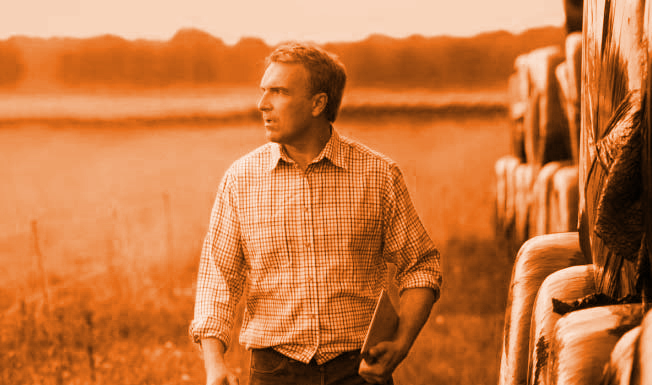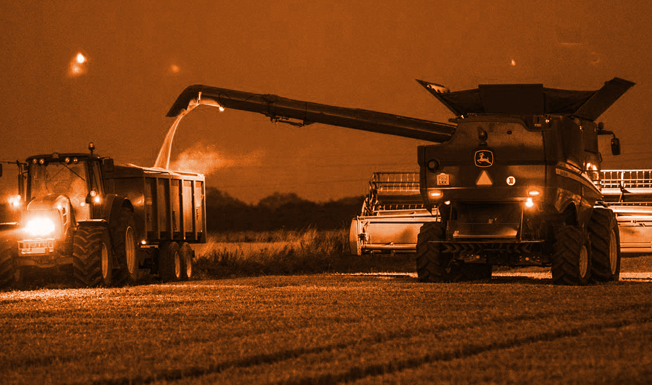Better buying, better selling – Strategic grain marketing reaps top rewards
It may only seem a moment since the combines were put to bed. But it’s already time for growers to think about next year’s harvest if they are to maximise marketing opportunities. CPM gets the lowdown from farmer co-operative Openfield.
By Natalie Noble, CPM Magazine
Grain prices have been particularly buoyant this year – but global markets are notoriously volatile, so what does the future hold in store for harvest 2022?
Understanding historical market movements – and how they’re likely to evolve – is an important part of tailoring the farm’s marketing strategy to manage risk and bring reward, says Richard Jenner, member services director at Openfield.
Global factors have been central to this year’s high prices, particularly the late planting of Brazil’s second maize crop which makes up its exportable surplus. “After estimating a crop of some 106m tonnes, drought caused the crop to fall short by around 20m tonnes – ultimately taking Brazil out of the export market,” he explains.
Another major factor was the USDA’s May forecast, where initial expectations of an abundant global wheat and maize harvest were undermined. “Soaring temperatures resulted in a 12m tonne cut in the Canadian crop and 4m tonnes off the US crop. This left consumers scrabbling for cover at a time when the pandemic was still creating uncertainty around demand.”
In addition, China’s wheat crop was severely affected by rain, while adverse weather conditions later delayed the wheat harvest across France, Germany and the UK – compromising crop yields and quality. The restricted availability was only worsened by Russia implementing export taxes at a time when everybody was still needing to buy, says Richard.
Closer to home, expensive maize imports pushed up domestic wheat demand in the North of England as consumers like Ensus switched their purchases back to wheat.
The unfolding HGV driver shortage compounded these supply issues. “It’s all very well having high prices in the North, but you need to have logistical capability to get the grain there,” he explains.
Today – despite everything that’s happened – the UK is probably the cheapest feed wheat source in Europe, says Richard. So how and where can farmers look to sell their 2022 harvest – and what lessons can be learnt?
Looking back, it isn’t a question of who got it right or wrong; attitude to risk is key to farmers’ decision-making, he says. “Growers make marketing decisions for what are the right reasons at the time. This time last year they were locking into feed wheat prices around £150/t ex-farm for autumn 2021 which was a significant advance on the previous year.
“For those looking at their cost of production and the return the market might give them, spreading risk by locking in some of their feed wheat at that price wouldn’t have been a bad decision. The key being that they didn’t lock in 100% of what they were growing and miss out on recent opportunities.”
Feed wheat prices were around £200/t at the time of writing. By having an informed and strategic marketing plan growers will have been better placed to determine risk and capitalise on market opportunities.
“We’ve seen a big market movement for both cereals and oilseed rape over the past two years,” says Richard. “So you’ve got to be a confident person to sell a significant proportion of your grain forward and flat – it’s about knowing your markets and managing risk.”
Forward selling a significant proportion of any combinable crop is not uncommon, but in the case of oilseed rape, growers usually have a more conservative approach. “I don’t think many would look to forward sell 100% of their oilseed rape crop,” he says. “Most would leave marketing until closer to harvest, because of the uncertainty around yield – even in a good year.”
That said, last year’s high prices did encourage more forward selling then normal; something which many growers regretted as values have since reached unprecedented highs, triggered by strong vegetable oil demand as hospitality patterns returned to normality after lockdown.
“At the time they were selling, the crosswinds of Covid left people guessing as to whether there would be a positive or negative effect on the market,” explains Richard. “So they wouldn’t have necessarily foreseen the big movement in value that we have experienced over the past six to eight months with the limited availability of imports. But the market value was still considerably better than the previous year and again people were selling for the right reasons and the majority locked into a profit.”
So what can growers take from this? “Some of it is about looking at how much you might have sold – if you sold 100% then that would have been a high-risk strategy given the unknowns in place,” he says.
Although it’s never wrong to sell at a fixed price if it locks in a profit, there is value in being able to stay in the market by utilising minimum-priced contracts, options, or participating in a pool for example.
So what lies ahead in the next 12 months?
“The world is watching whether or not there will be an increase in global cereal availability which will alleviate the current tight stock situation,” explains Richard.
Pundits anticipate a large South American maize crop, but that is reliant on first plantings picking up pace and the arrival of the La Nina weather phenomenon not interfering with crop growth. Both factors directly affect the timing and availability of the exportable surplus and the nearby market position.
There needs to be a large global wheat crop to rebuild stocks, with Russia and the US major contributors. “If the global wheat crop does recover then that’s the first indication that there might be a weakening in new crop prices,” he adds.
On the doorstep, high fertiliser costs will likely impact grain supply and demand as well as individual marketing decisions. “There will be individuals who’ve taken quite a lot of cover for fertiliser and those who’ve not got much at all because of the size of investment,” he says.
“They will have very different attitudes to managing risk and marketing – those in the latter category might move to planting more spring crops to reduce their reliance on fertiliser, but this will affect the market and their marketing strategy.”
Other key issues that could affect the domestic market in 2022 include the potential for the UK to return to a wheat surplus and high freight rates. “If maize imports become cheaper then it could displace wheat, which would have to be exported,” he explains. “If maize holds its price, then it would put a greater reliance on domestic wheat, which in turn would keep prices firm.”
So given the fundamentals of the global and local grain markets right now, where is the UK price likely to go? “Imported grain, particularly milling wheat, for the 2021 spot price is still trading at £15-20/t above the domestic market,” explains Richard. “Just because the market has gone up already doesn’t mean that it can’t go up further.”
Winter is a good time of year to review marketing options as it offers an opportunity to react to spot price fluctuations as well as monitoring longer term trends, he says. “For example, the spring malting barley premium is currently exceptionally high, at around £50-60/t over feed. In a commodity market growers must be able to flex to capitalise on any opportunity that suits the farm and offers profit.”
In the medium term, the UK’s shortage of HGV drivers looks set to continue, which presents a challenge. “Until the Government rolls out a national strategy, it’s going to take a while to resolve – but this raises the topic of what value is better sought from local markets,” says Richard.
Local markets have an important role to play in pricing and mitigating risk. “There’s probably going to be an increased focus on the domestic market, because we are likely to see fewer years where we have an exportable surplus,” he adds. Therefore, there is a greater importance in understanding what is being grown and who it is grown for, because the export market may not be there.
“So understanding the local markets and supply chain – particularly given the ongoing logistical challenges – is something growers might need to think about to make sure they are producing for and selling into a viable and profitable market.”
For example, with less soft wheat being grown than before, biscuit manufacturers are struggling for raw materials – which may make for a good local market.
“In North Lincolnshire there will soon be an ethanol plant in East Yorkshire, flour milling operations in South Yorkshire, as well as good demand for animal feed and industrial alcohol production – there are lots of market opportunities available.”
Contrastingly, on the south coast in Sussex there are no local or flour mills, so growers need to look at potential local markets and plant accordingly.
Niche markets might be the option for some growers. “However, a limiting factor is finding a route to market, as well as how much space there is at mills or in stores for these alternative raw materials.”
It’s also vital to pay attention to the detail of local market demands, he adds. “A recent example is spring wheat – some outlets are taking group two varieties and others are not; growers could find themselves growing something they don’t have an outlet for.”
Marketing tools
Growers should talk about the whole range of marketing tools available to manage risk, explains Richard. “Don’t make a marketing decision purely for cashflow reasons; there are tools that allow cashflow to be managed so as not to miss out.”
There are also alternatives to forward or spot selling, including pools, minimum/maximum priced contracts and market trackers. “I’m sure that all pools will this year be delivering a value significantly higher than those people who sold forward this time last year.”
Pools are usually manged by specialists who understand market fundamentals and manage risk on behalf of farmers, while market trackers simply lock into price increments over time. Both alleviate growers’ own time dedicated to marketing, which can be a significant benefit. “You can usually stop a tracker any time, so if you wish to lock out at a particular value then you can do so,” says Richard.
The world of options is more complex and cost can be off-putting – but growers shouldn’t rule them out. Current costs are around £15/t for a November option “at the money”, but this will enable farmers to manage risk while being able to capitalise on changing markets ahead.
Important elements to a successful marketing strategy:
- Understand cost of production
- Understand risks: Key market fundamentals, variety selection and crop risk
- Set a target selling price
- Develop a strategy to balance production cost, target price and risk. Conservative individuals might forward sell 20-25% of autumn plantings, with feed wheat currently around £180/t ex-farm for autumn 2022.
- Monitor risks and review strategy to enable flexibility to react to market change and opportunity.
- Understand market exposure. Look at unpriced crop percentage, crop sold forward at a fixed or minimum price. Decide what level of risk can be carried.
- Get help. AHDB produces very good articles on key market drivers, while grain traders can support marketing strategy decisions.
Openfield
To remain at the forefront of arable farming and to maximise the value from every hectare of crop grown requires a keen understanding of the grain market, the seed to supply it, and the fertiliser to feed the crop. Through this series of articles, CPM is working with Openfield to provide a market insight and help farmers to focus on these major business decisions to ensure better buying of inputs, and better selling of the produce.
Openfield is Britain’s only national farming grain-marketing and arable inputs co-operative, owned by around 4000 arable farmers. Openfield’s team works with a total of 6000 farmers to supply some of the biggest and best-known names in the British food and drink manufacturing industry.
But there’s more than just grain to Openfield, supplying seed and fertiliser, providing grain storage and offering expert advice on grain marketing and risk management. This delivers innovative supply chain solutions to its farmers and clients.




